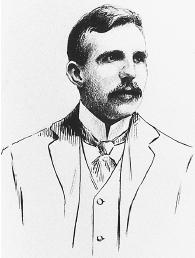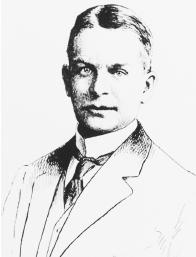Atomic Mass - How it works
Why Mass and Not Weight?
Some textbooks and other sources use the term atomic weight instead of atomic mass. The first of these is not as accurate as the second, which explains why atomic mass was chosen as the subject of this essay. Indeed, the use of "atomic weight" today merely reflects the fact that scientists in the past used that expression and spoke of "weighing" atoms. Though "weigh" is used as a verb in this essay, this is only because it is less cumbersome than "measure the mass of." (In addition, "atomic weight" may be mentioned when discussing studies by scientists of the nineteenth century, who applied that term rather than atomic mass.)
One might ask why such pains have been taken to make the distinction. Mass is, after all, basically the same as weight, is it not? In fact it is not, though people are accustomed to thinking in those terms since most weight scales provide measurements in both pounds and kilograms. However, the pound is a unit of weight in the English system, whereas a kilogram is a unit of mass in the metric and SI systems. Though the two are relatively convertible on Earth, they are actually quite different. (Of course it would make no more sense to measure atoms in pounds or kilograms than to measure the width of a hair in light-years; but pounds and kilograms are the most familiar units of weight and mass respectively.)
Weight is a measure of force affected by Earth's gravitational pull. Therefore a person's weight varies according to gravity, and would be different if measured on the Moon, whereas mass is the same throughout the universe. Its invariability makes mass preferable to weight as a parameter of scientific measure.
Putting an Atom's Size and Mass in Context
Mass does not necessarily relate to size, though there is enough of a loose correlation that more often than not, we can say that an item of very small size will have very small mass. And atoms are very, very small—so much so that, until the early twentieth century, chemists and physicists had no accurate means of isolating them to determine their mass.
The diameter of an atom is about 10 −8 cm. This is equal to about 0.000000003937 in—or to put it another way, an inch is about as long as 250 million atoms lined up side by side. Obviously, special units are required for describing the size of atoms. Usually, measurements are provided in terms of the angstrom, equal to 10 −10 m. (In other words, there are 10 million angstroms in a millimeter.)
Measuring the spatial dimensions of an atom, however, is not nearly as important for chemists' laboratory work as measuring its mass. The mass of an atom is almost inconceivably small. It takes about 5.0 · 10 23 carbon atoms to equal just one gram in mass. At first, 10 23 does not seem like such a huge number, until one considers that 10 6 is already a million, meaning that 10 23 is a million times a million times a million times 100,000. If 5.0 · 10 23 angstrom lengths—angstroms, not meters or even millimeters—were laid end to end, they would stretch from Earth to the Sun and back 107,765 times!
Atomic Mass Units
It is obvious, then, that an entirely different unit is needed for measuring the mass of an atom, and for this purpose, chemists and other scientists use an atom mass unit (abbreviated amu), which is equal to 1.66 · 10 −24 g.
Though the abbreviation amu is used in this book, atomic mass units are sometimes designated simply by a u. On the other hand, they may be presented as numbers without any unit of measure—as for instance on the periodic table of elements.
Within the context of biochemistry and microbiology, often the term dalton (abbreviated Da or D) is used. This is useful for describing the mass of large organic molecules, typically rendered in kilodaltons (kDa). The Latin prefix kilo-indicates 1,000 of something, and "kilodalton" is much less of a tongue-twister than "kilo-amu". The term "dalton" honors English chemist John Dalton (1766-1844), who, as we shall see, introduced the concept of the atom to science.
AVERAGE ATOMIC MASS.
Since 1960, when its value was standardized, the atomic mass unit has been officially known as the "unified atomic mass unit." The addition of the word "unified" reflects the fact that atoms are not weighed individually—a labor that would be problematic at the very least. In any case, to do so would be to reinvent the wheel, as it were,

Average atomic mass figures range from 1.008 amu for hydrogen, the first element listed on the periodic table of elements, to over 250 amu for elements of very high atomic number. Figures for average atomic mass can be used to determine the average mass of a molecule as well, since a molecule is just a group of atoms joined in a structure. The mass of a molecule can be determined simply by adding together average atomic mass figures for each atom the molecule contains. A water molecule, for instance, consists of two hydrogen atoms and one oxygen atom; therefore, its mass is equal to the average atomic mass of hydrogen multiplied by two, and added to the average atomic mass of oxygen.
Avogadro's Number and the Mole
Atomic mass units and average atomic mass are not the only components necessary for obtaining accurate mass figures where atoms are concerned. Obviously, as suggested several times already, it would be fruitless to determine the mass of individual atoms or molecules. Nor would it do to measure the mass of a few hundred, or even a few million, of these particles.

In addition, scientists need some means for comparing atoms or molecules of different substances in such a way that they know they are analyzing equal numbers of particles. This cannot be done in terms of mass, because the number of atoms in each sample varies: a gram of hydrogen, for instance, contains about 12 times as many atoms as a gram of carbon, which has an average atomic mass of 12.01 amu. What is needed, instead, is a way to designate a certain number of atoms or molecules, such that accurate comparisons are possible.
In order to do this, chemists make use of a figure known as Avogadro's number. Named after Italian physicist Amedeo Avogadro (1776-1856), it is equal to 6.022137 × 10 23 . Avogadro's number, which is 6,022,137 followed by 17 zeroes, designates the quantity of molecules in a mole (abbreviated mol). The mole, a fundamental SI unit for "amount of substance," is defined precisely as the number of carbon atoms in 12.01 g of carbon. It is here that the value of Avogadro's number becomes clear: as noted, carbon has an average atomic mass of 12.01 amu, and multiplication of the average atomic mass by Avogadro's number yields a figure in grams equal to the value of the average atomic mass in atomic mass units.
Comment about this article, ask questions, or add new information about this topic: